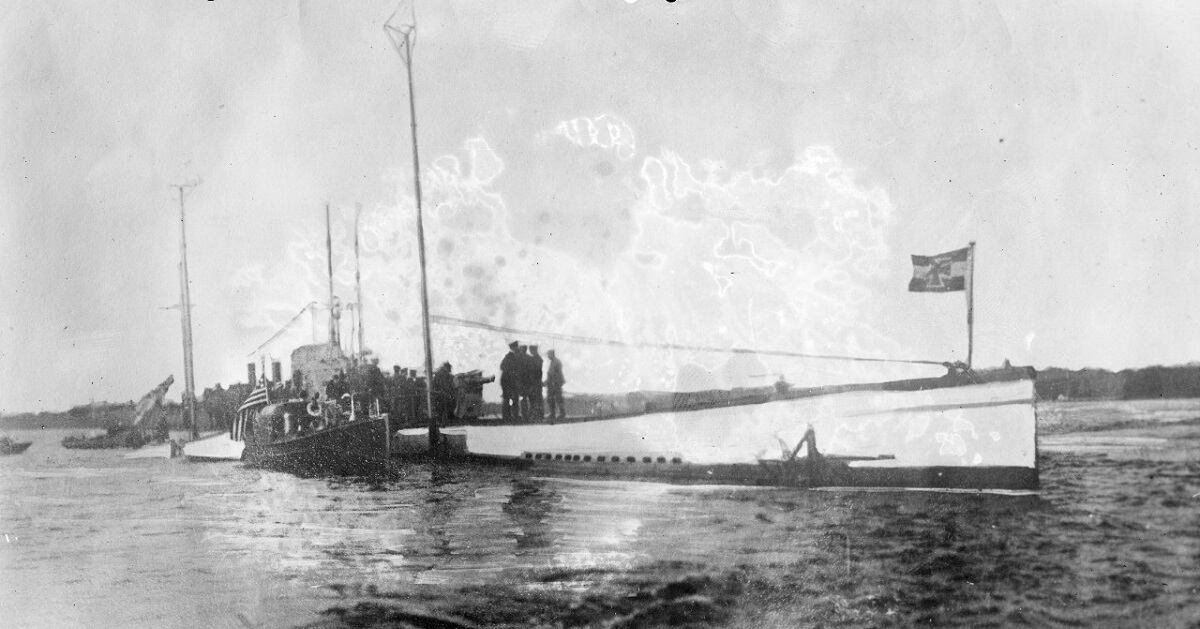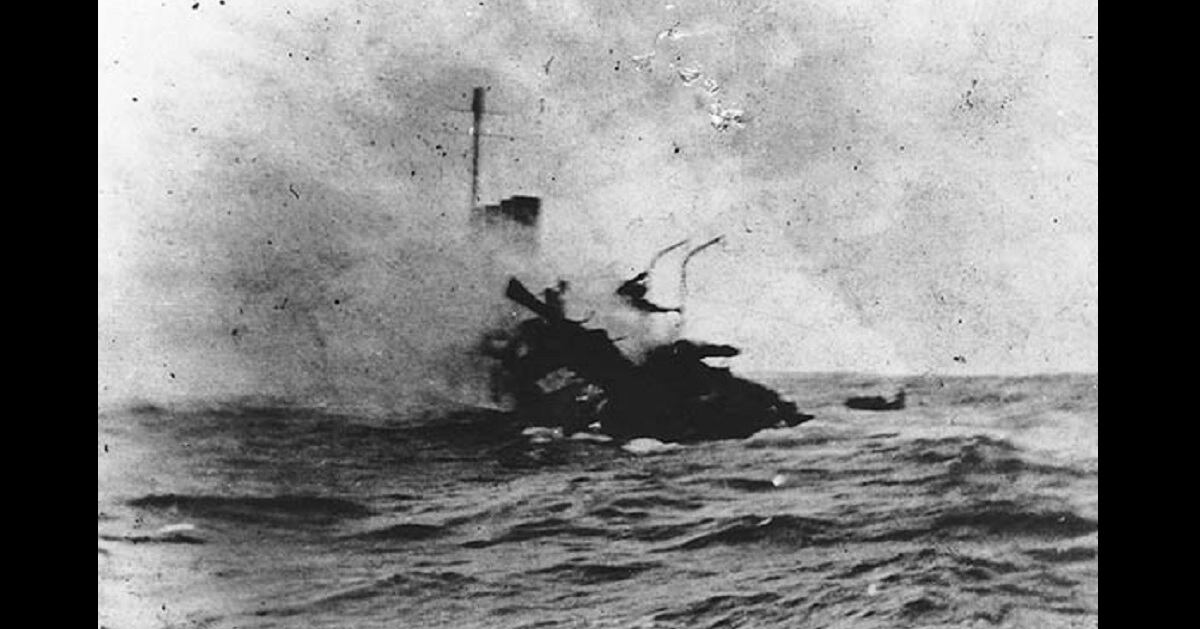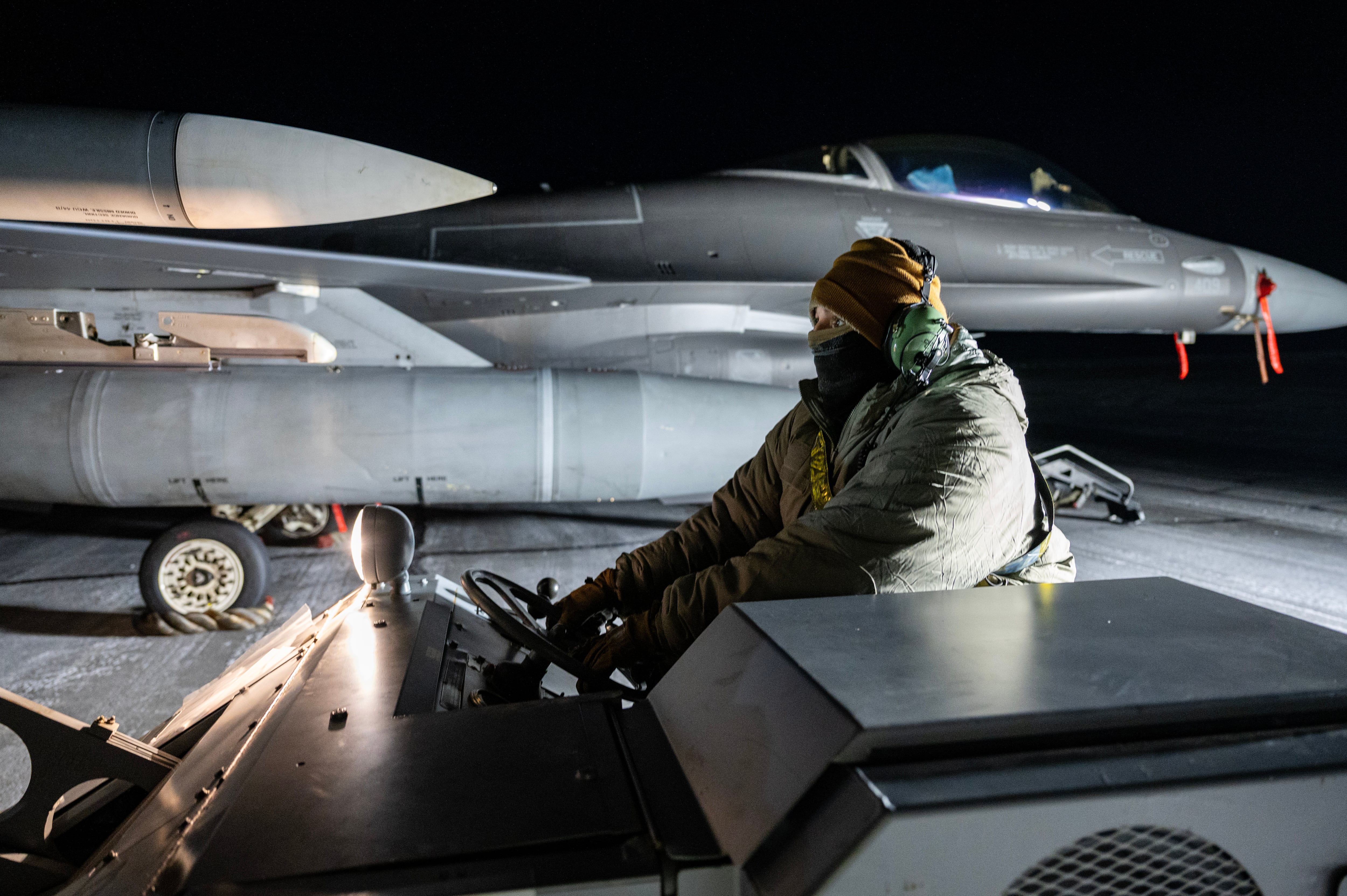The wreckage of the USS Jacob Jones, a Tucker-class destroyer, and the first ship of its kind to be sunk by enemy fire, was recently discovered off the southwest coast of England by a group of UK diving experts.
The WWI destroyer was hit Dec. 6, 1917, by a German torpedo, killing 64 of the 110 officers and crew onboard, according to Naval History and Heritage Command.
Over 100 years later, a group of diving experts from the UK discovered the ship’s wreckage about 400 feet underwater and roughly 60 miles south of Newlyn, England, according to an Aug. 11 Facebook post from Steve Mortimer, one of the divers and the group’s research lead.
“We found the Jacob Jones, the first U.S. destroyer to be sunk, ever, and the first major casualty for the U.S. Navy-wise in WWI. It’s an incredible achievement,” Will Schwarz, 39, another one of the divers, said in an interview with Military Times.
The historic find was led by expeditionary diver Mark Dixon on his boat the Darkstar, with help from a team of independent dive groups and individuals, some with commercial dive club experience, Schwarz said. Months of planning and training went into the trip before it occurred, he shared, but this type of mission was nothing new for him or other members of the team who recently found the lost HMS Jason off the coast of Scotland.
The story of the Jacob Jones’ ultimate decent into the depths of the ocean is a dramatic tale that paints an intriguing picture of WWI warfare, and its finding is only the most recent in a series of remarkable naval discoveries.
On its way from France to Ireland, the Jacob Jones was torpedoed on its starboard side and sank in roughly eight minutes about 20 miles east of Start Point, England, according to NHHC. It had been performing rescue operations in Europe throughout 1917. As its stern sank, Commander David Bagley reportedly ordered the ship to be abandoned. The officer on deck when the incident occurred, Lt. Stanton Kalk, sacrificed his life to help his men out of the water and evenly distribute them into life rafts, according to NHHC.
In an interesting turn of events, however, the German captain of the U-53 that had attacked the Jacob Jones radioed to the nearby American base in Queenstown to let them know they had sailors at sea that needed to be saved. Rescue operations were conducted by British warships.
“They might have been enemies, but everyone recognizes, the sea is a horrific mistress,” Schwarz said.

After making the discovery, Schwarz said he and the team did not disturb the site at all and only shared its exact coordinates with the U.S. military, which will ultimately decide what happens to the remains of the Jacob Jones.
“As a general rule we prefer to have Navy wreck sites preserved,” said Adm. Samuel Cox, the director of Naval History and Heritage Command and curator of the Navy, in an interview with Military Times. Cox has worked as the command’s director for nearly eight years now after serving more than 30 years as a naval intelligence officer.
He said it is conceivable that a dive team could bring up the ship’s bell to be kept at the National Museum of the U.S. Navy, as is common to commemorate a vessel’s legacy, but said that, in general, honoring the war grave as a hallowed site means causing as little damage to the ship as possible.
Locating the wreckage of the USS Jacob Jones was the latest achievement for naval historians after an array of other big finds have recently surfaced.
The USS Samuel B. Roberts, a John C. Butler-class destroyer escort, was found earlier this summer off the Philippines at nearly 23,000 feet below sea level, the deepest shipwreck ever located according to the explorers. That discovery came on the heels of finding the USS Johnston in 2021, which was previously considered the deepest wreck.
Director Cox cited “modern technology that didn’t exist” before as one explanation for the increasing trend of discoveries. He noted a few of the other missing naval vessels that he hopes will be discovered in the future include the Independence-class aircraft carrier Princeton, the Casablanca-class escort carrier Liscome Bay and the Bagley-class destroyer Jarvis.
Whether it be these ships or others, Schwarz and company are already making arrangements for their next big adventure.
“Next year we’ve already got some major plans in the British Isles waters to find and identify three other wrecks,” he said.
Jonathan is a staff writer and editor of the Early Bird Brief newsletter for Military Times. Follow him on Twitter @lehrfeld_media





